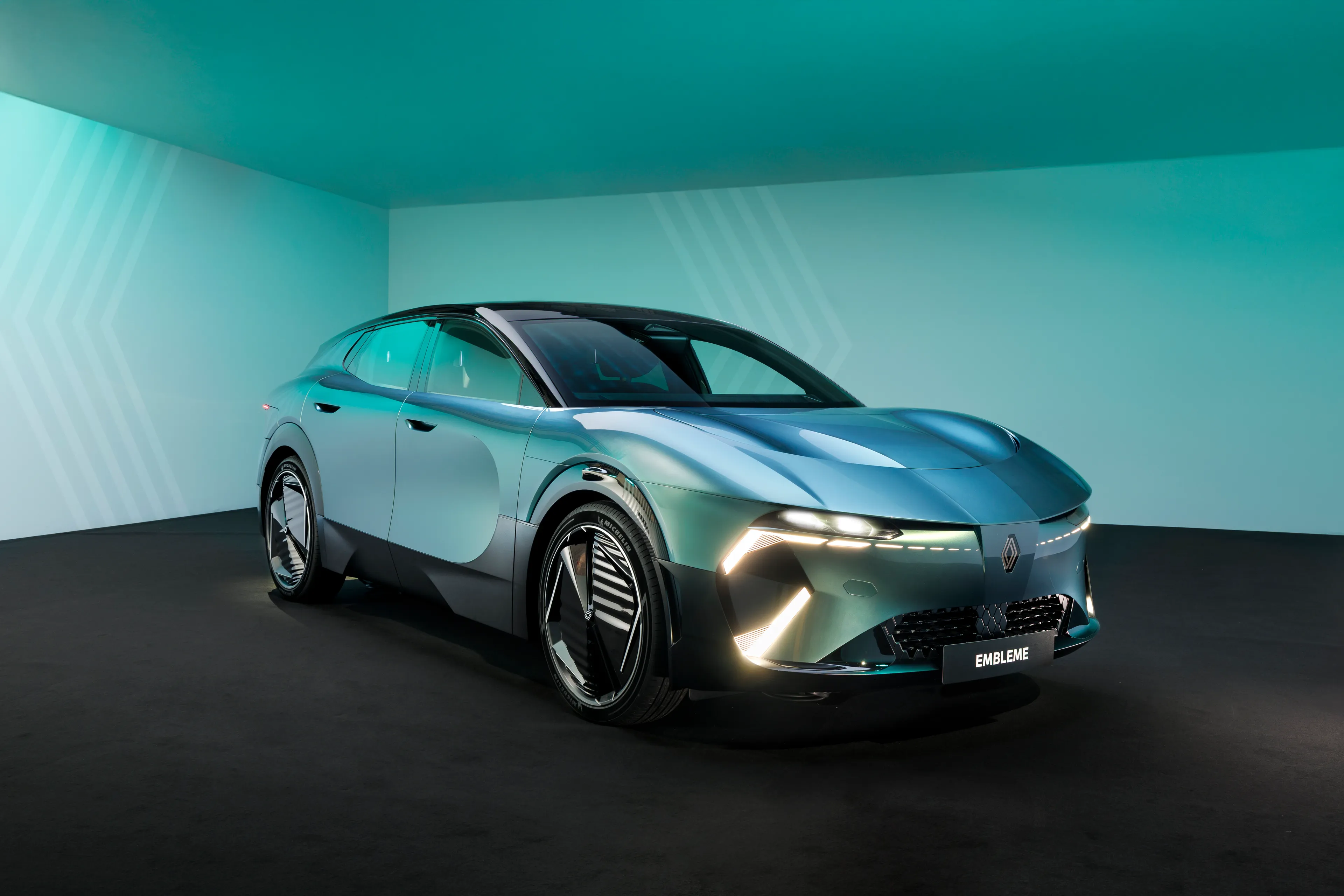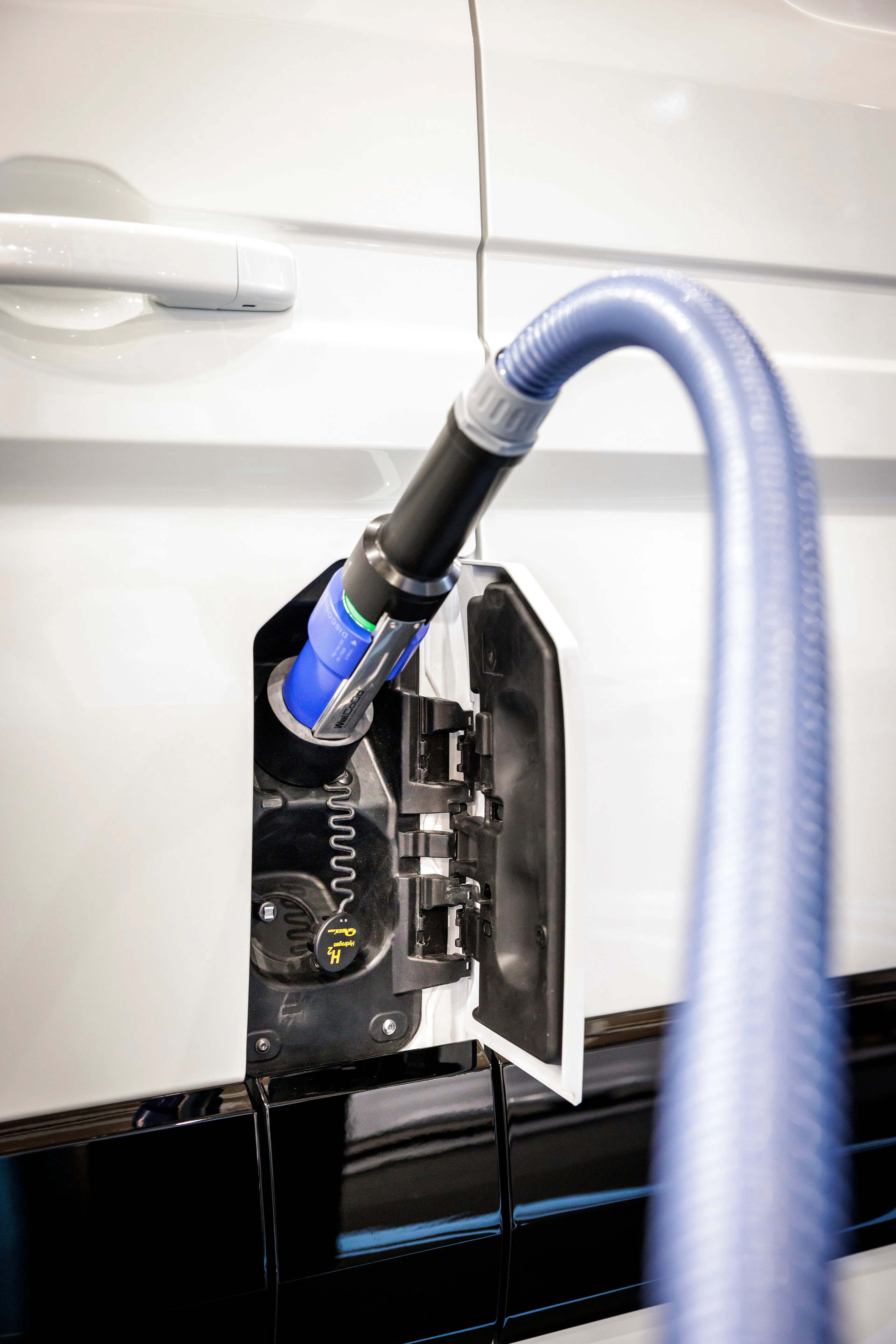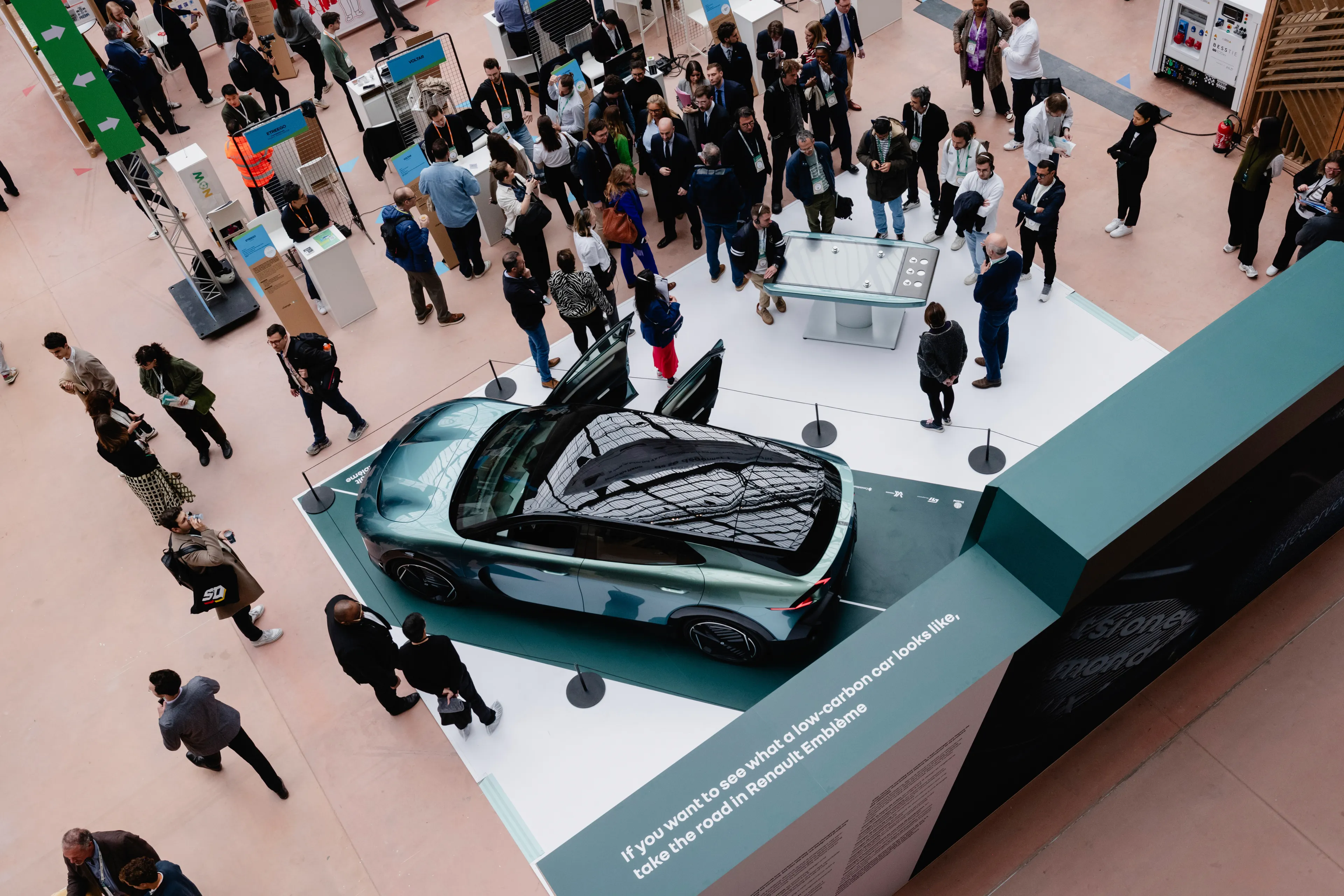How does a hydrogen vehicle work?
Published on

Among the various technologies to which the future of the automobile is turning, the hydrogen fuel cell car remains an option. This technology is still being explored by Renault Group, for various vehicles. Hydrogen is changing the game in low carbon mobility, alongside electric power, in terms of both challenges and possibilities. Here are some explanations to better understand this famous chemical element.
BY RENAULT GROUP
While, for many, the term “fuel cell” might sound like complex advanced technology, the secret to this new way of producing energy lies in a simple chemical reaction between oxygen and hydrogen. So what are the particularities of a hydrogen vehicle? How does it work? What are its advantages? And, more concretely, what are the possible uses of a hydrogen car?
The challenges of the hydrogen electric car
We’ll begin with some context. The term “hydrogen electric car” refers to a vehicle powered by a specific energy source — hydrogen — using a special device: the fuel cell. The hydrogen fuel cell vehicle belongs to the large family of electric cars, as it gets its traction from an electric powertrain.
For an electric car powered by a lithium-ion battery, electrical energy is stored in the battery after charging on the electrical grid. Whereas in a hydrogen vehicle, the electricity required to run the powertrain is not only supplied by the battery, but also by the fuel cell using hydrogen stored onboard the vehicle. The majority of hydrogen vehicles currently produced by automobile manufacturers work in this way.
The hydrogen-powered car shares the same low carbon impact ambitions as the 100% electric vehicle. That said, there still remain several challenges to overcome in order to reduce the environmental impact of hydrogen production as much as possible. The current method of extracting this chemical element relies on the steam reforming of hydrocarbons and is called “grey” hydrogen because it is extracted from fossil fuels.
But there is another way to obtain hydrogen: through water electrolysis. Where the electricity used in the electrolysis process is from a sustainable energy source, like solar or wind power, it is possible to produce “green” hydrogen. This extraction method is a solution for the future.
How the hydrogen electric vehicle works using a fuel cell
How does the hydrogen fuel cell vehicle work in practice? Its electric energy is supplied by a fuel cell. Pressurized hydrogen is stored in special tanks onboard the vehicle. The gas (H2), along with dioxygen (O2) from the surrounding air, are supplied to the fuel cell. These two gases then undergo an electrochemical reaction inside the cell, in turn producing electricity, heat and water vapor (H2O), which is released in the form of water through an exhaust pipe located under the vehicle.
The resulting energy produced, as well as energy from the battery, power the car’s electric motor, which is then able to run silently and with zero pollutant or CO2 emissions. The vehicle can be refuelled with hydrogen at dedicated stations, using pumps that inject hydrogen, extremely quickly (5 minutes), into the vehicle’s tank in the form of pressurized gas.
The energy consumption of a hydrogen fuel cell vehicle
Bear in mind that the hydrogen atom, two of which are required to make up the dihydrogen (H2) molecule, is one of the simplest and lightest natural elements on the periodic table (the classification which lists all the chemical elements present on Earth.) It has very low volume density. So, in order to obtain the quantity of hydrogen needed to power a vehicle, it is necessary to store a considerable amount in large tanks at high pressure.
The hydrogen fuel cell electric vehicle according to Renault Group
The hydrogen fuel cell electric vehicle is, for Renault Group, an electric vehicle that combines a lithium-ion battery and a hydrogen fuel cell under one hood. By opting to use both technologies together, the brand combines the best of both worlds.

In the architecture of Renault Master Van H2-TECH, the motor of the hydrogen-powered electric van is powered by its lithium-ion battery. As for the fuel cell, it provides an additional energy reserve that increases the range of the car (providing more autonomy and shorter charging time.) Hydrogen-powered vehicles provide the driver with the practical and financial advantages of electric power, plus the benefits offered by hydrogen in terms of flexibility and range.
In this typical architecture, the electric motor is powered by the lithium-ion battery. The fuel cell provides additional energy reserves, increasing the vehicle's range, offering greater autonomy and reducing recharging time.
The advantages of the hydrogen-powered car
Behind the wheel of a hydrogen-powered vehicle, the driver benefits above all from almost double the range. The electricity generated by the fuel cell using hydrogen storage adds to the storage capacity of the main battery. In this way, the hydrogen system can be seen as a “range extender”.
The icing on the cake is the refueling speed. As well as recharging on the grid, a maximum of five minutes are enough to refill the hydrogen tank in order to supply the fuel cell — instantly increasing the vehicle’s range.
And these aren’t the only advantages: the hydrogen-powered vehicle offers all the benefits of driving an electric vehicle, starting with the lack of engine noise, enjoyable driving experience, and access to restricted driving zones in certain city centers.
Recharging a hydrogen-powered vehicle
How exactly is a hydrogen fuel cell electric vehicle recharged? The answer differs between manufacturers. In the solution studied by Renault Group, the vehicle offers two options for replenishing its energy reserves. Firstly, recharging from a standard electric terminal to supply the lithium-ion battery (an option facilitated by the number of accessible charging stations.) Secondly, refueling at a hydrogen station to refill the gas tank takes just a few minutes — during the day, for example, when the driver needs to extend their trip.

While the term “fuel cell car” has not yet entered into our everyday language, it shouldn’t evoke concern when it comes to safety. Of course, hydrogen, under high pressure in the tank, is flammable and volatile, but this is true of all fuels. In case the fuel cell overheats or is removed, the hydrogen is dispersed and released in less than a minute.
For over twenty years, technologies that use dihydrogen have been tested and approved on numerous occasions, often under extreme conditions (space engineering, submarines, construction machinery).
Renault Group is also working on dual-energy electric powertrains (rechargeable battery and hydrogen fuel cell), notably with its Renault brand and the Emblème demo car.
We should also mention the work carried out by Alpine on hydrogen, with the Alpenglow Hy4 and Hy6 prototypes presented in 2024.

A comparison of the hydrogen car and electric lithium-ion battery car
While these two technologies give the impression of being diametrically opposed, they are actually complementary mobility modes. The question “hydrogen or electric car?” depends above all on the use and type of vehicle. On a light utility vehicle with a high payload capacity, hydrogen is particularly interesting. Even though the tank used to store the gas is large, its weight remains reasonable. Hydrogen is especially suited to intensive closed-loop use where refueling is easily locatable and accessible on the vehicle’s route, or even directly on company premises.
Electric vehicles equipped only with lithium-ion batteries are intended for all types of driver and use, from short trips around town to longer journeys. But when the battery is empty, the only solution is to recharge on the electricity grid. The electric-only vehicle takes longer to charge than its hydrogen counterpart, but there are more charging stations available, both in private and public locations. Parking can be easily combined with charging the vehicle.
Both electric and hydrogen are therefore two technologies that complement each other in their uses, both aimed at providing sustainable mobility.
How established are hydrogen vehicles in Europe?
In 2020, new registrations of hydrogen fuel cell vehicles occurred mostly in Germany, followed by the Netherlands and France**. Hydrogen refueling stations are expanding progressively throughout Europe. In 2023, in France, 23 stations were currently in operation, with a target of 900 by 2030. In Germany, 109 have been installed, with a target of 300 by 2030, and 3 in Spain for 150 by 2030. The Netherlands had 12 stations in operation in 2023, with a target of 150 by 2025. The arrival of the first mass-produced hydrogen electric cars, including professional vehicles currently refueled on company premises, could accelerate the development of infrastructure, and help to develop hydrogen technology.
* WLTP: Worldwide Harmonised Light Vehicle Test Procedure. The standard WLTP cycle corresponds to 57% of city journeys, 25% of suburban journeys and 18% of motorway journeys. The range values shown are based on the WLTP protocol study. They may vary depending on actual conditions of use and various factors such as: speed, thermal comfort inside the vehicle, driving style and outside temperature.
**Statement for the third quarter of 2020, published by the ACEA, European Automobile Manufacturers’ Association
Copyrights: Pagecran, Olivier Martin-Gambier, Yann Lefebvre (DPPI Media), Nicolas Lascourreges (La Company)